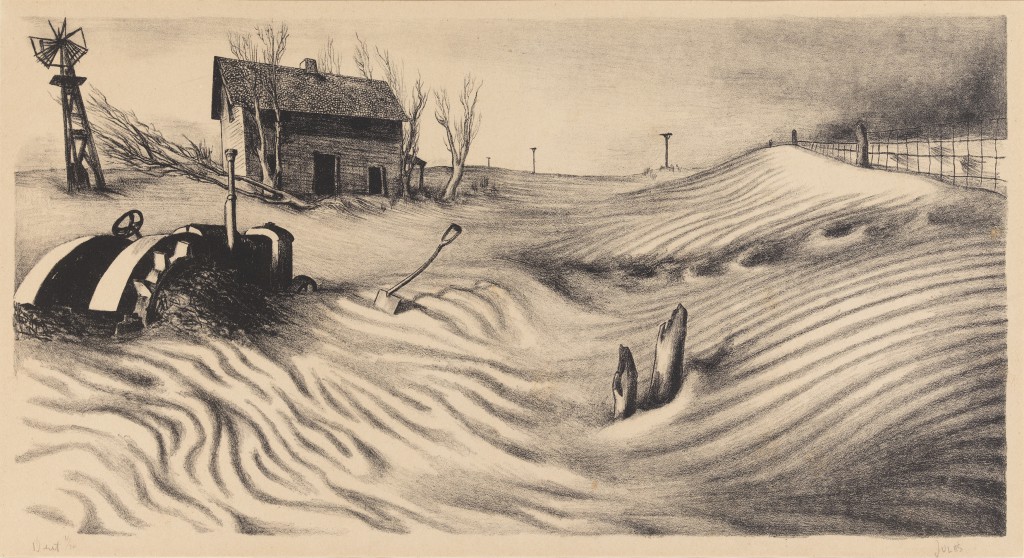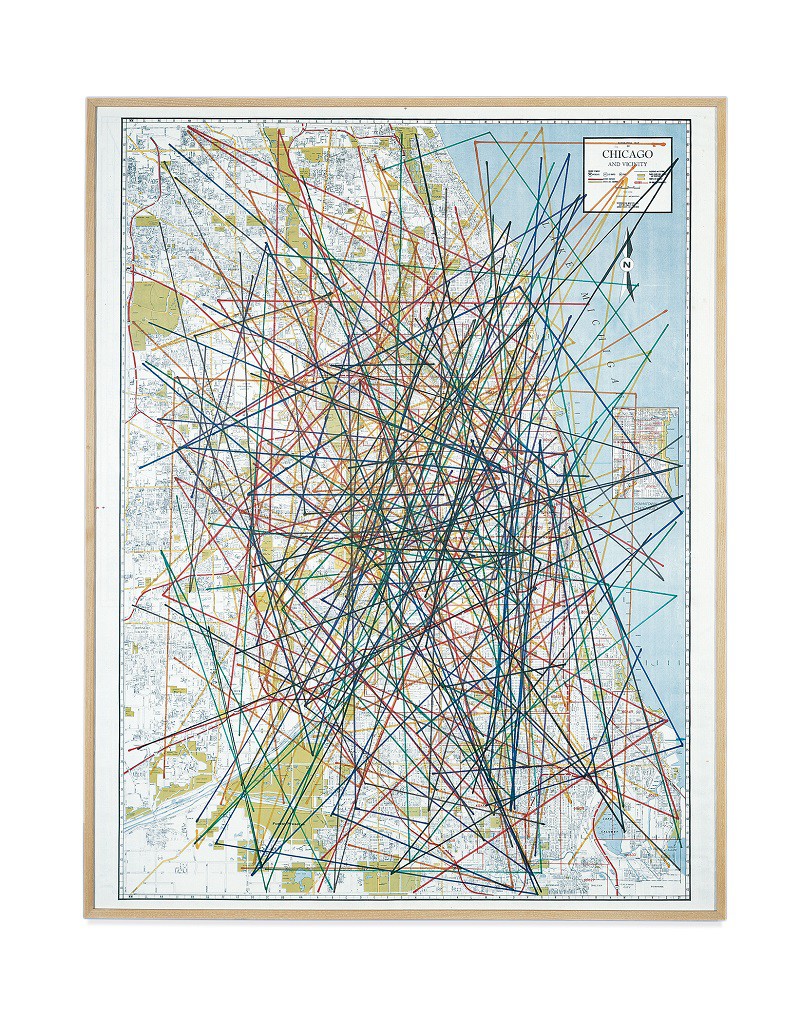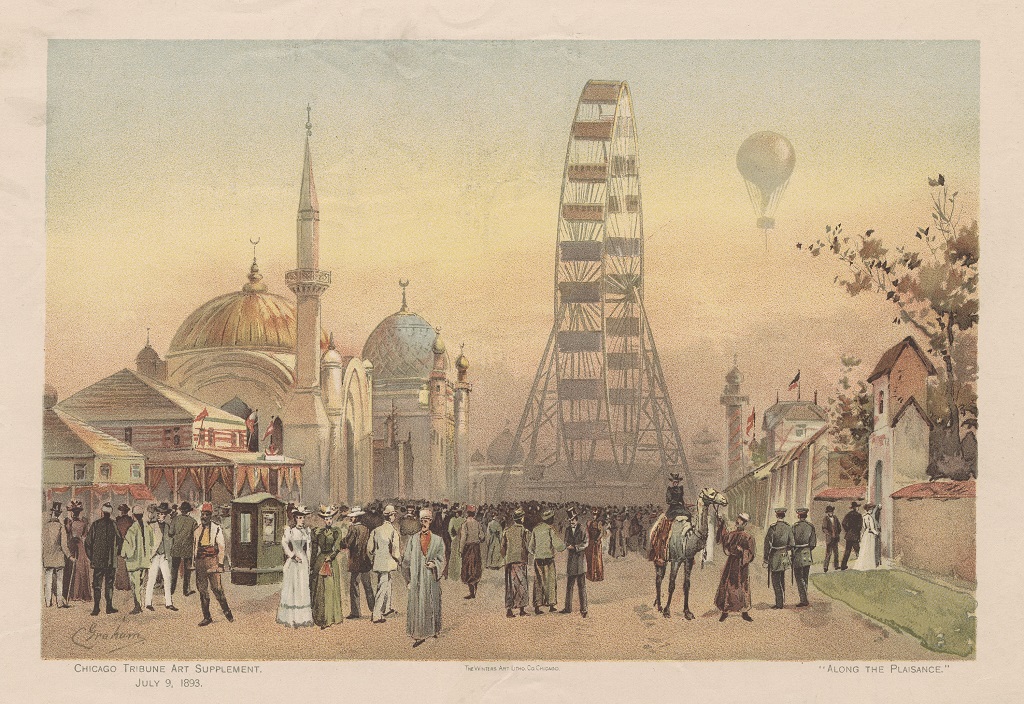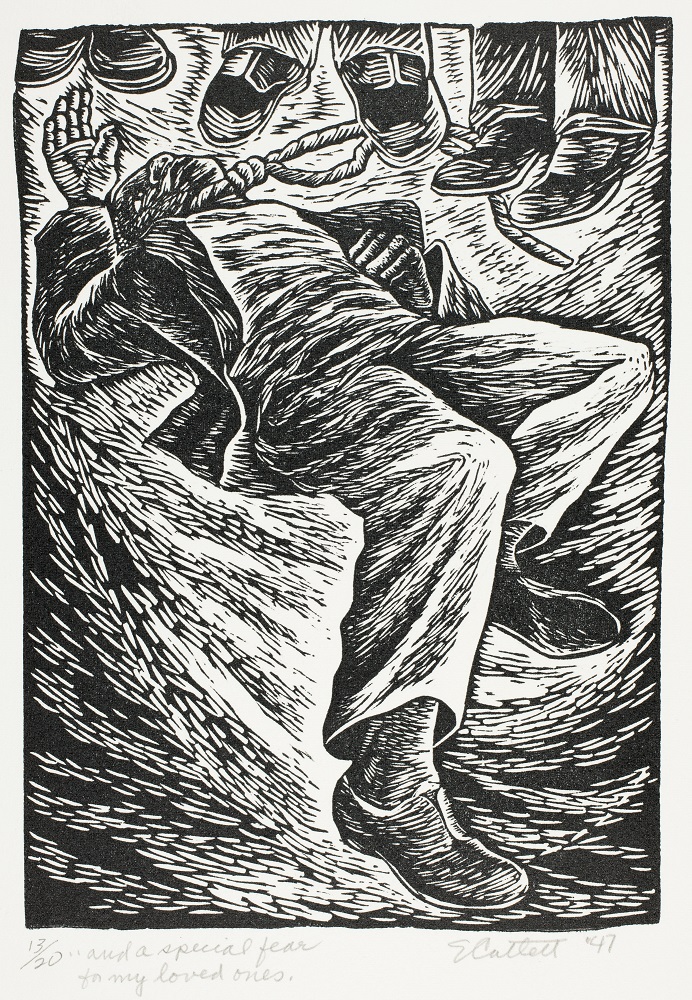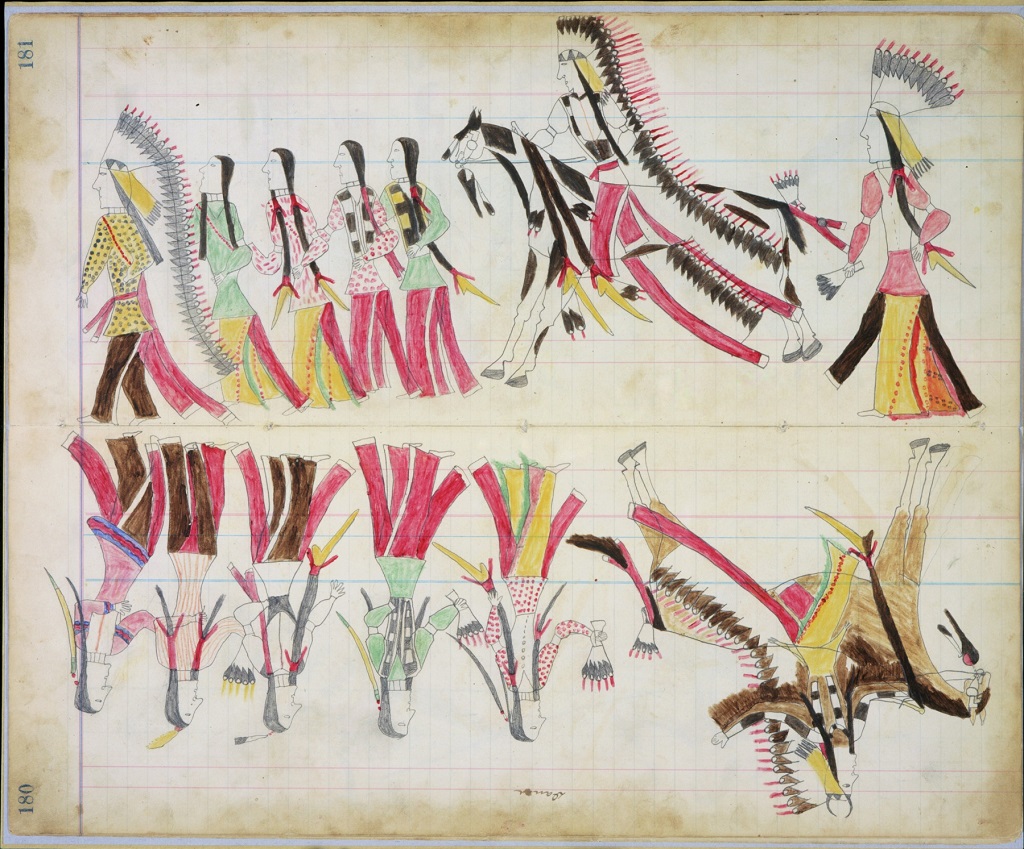Authors:
Amy Andrews, Chicago Public Schools
Jennifer Chisholm, District 65
Judy Koon, Mary and Leigh Block Museum of Art
Sarah Salto, Mary and Leigh Block Museum of Art
Summary:
This lesson pairs a work of art about the Dust Bowl, the print Dust by Mervin Jules, with a verse novel on the same subject, Out of the Dust by Karen Hesse, which is widely available in school and public libraries. Both of these sources richly describe the effects of dust storms on people and places. Students begin by looking closely at Dust to analyze and interpret the image. They read an informational text about the image that provides background on the Dust Bowl. Next, they do a close reading of “Blankets of Black,” a poem from Out of the Dust. Finally, they compare and contrast Jules’ work of art with Hesse’s poem. By closely reading the image and the text, students dive deep into the content and learn what life was like for people who experienced the Dust Bowl.
Lesson Overview
Grade Levels: 5–8
Time Needed: 3 class periods, 40–50 minutes each
Background Needed
This lesson introduces students to the Dust Bowl in the Great Plains region of the United States during the 1930s. Prior knowledge about the Great Depression would be helpful but not essential.
Essential Questions
- How do artists and authors help us to understand what it was like to endure hard times?
- How do artists and authors express ideas, tell stories, and capture history through the different techniques of their media?
- How does close reading help you understand the structure and meaning of an image or a text?
- What tools and techniques do authors and artists use to establish setting, mood, and tone?
Enduring Understandings
- Artists and authors sometimes use themes and symbols to communicate how an event affected people’s lives and our history.
- Key details reveal the content and tone of a text.
- Understanding a text’s structures and themes helps the reader/viewer understand the key ideas of an image or a text.
Objectives
- Students will read closely to determine what a text or an image says explicitly and to make logical inferences from it.
- Students will determine central ideas or themes of a text or an image and analyze their development.
- Students will analyze how two or more texts or images address similar themes or topics in order to build knowledge and to compare the approaches the authors and artists take.
- Students will acquire and use accurately a range of general academic and domain specific words and phrases sufficient for reading, writing, speaking, and listening at the college and career readiness level.
Key Vocabulary
Art terms:
- background
- foreground
- horizon line
- lithograph
- medium
- mood
- symbolism
- tone
- value
Other terms:
- decay
- drought
- dust storm
- Dust Bowl
- Great Depression
- migration
- topsoil
Standards Connections
Common Core State Standards
Anchor Standards in Reading: http://www.corestandards.org/ELA-Literacy/CCRA/R/
- CCSS-ELA Reading Anchor Standard 1: CCSS.ELA-LITERACY.CCRA.R.1
- CCSS-ELA Reading Anchor Standard 2: ELA-LITERACY.CCRA.R.2
- CCSS-ELA Reading Anchor Standard 9: ELA-LITERACY.CCRA.R.9
Anchor Standards in Language: http://www.corestandards.org/ELA-Literacy/CCRA/L/
- CCSS-ELA Language Anchor Standard 6: CCSS.ELA-LITERACY.CCRA.L.6
Materials
In the Classroom
- Karen Hesse, “Blankets of Black,” from Out of the Dust (New York: Scholastic Press, 1997), 162-167. Provide enough copies of the book so that students can read this excerpt in pairs or small groups.
- a computer with Internet access
- an interactive whiteboard or another classroom projector
Works of Art
- Mervin Jules, Dust
Other Resources
- Close Looking Guide: Dust by Mervin Jules
- Art Study: Dust, Read to Build Knowledge
- Close Reading Guide: “Blankets of Black”
Lesson Steps
1. Introduce Dust by Mervin Jules: Project or post large copies of the image and have students sit close to it so that they are able to observe and point out details. To get students to look carefully and build their confidence in discussing art, distribute the Close Looking Guide: Dust by Mervin Jules. Go through these basic questions with students, giving them time after each question to record a response before sharing it:
- What is the first thing that stands out for you in this picture? Why?
- Where does your eye go next? What else do you notice in this scene?
- What type of place is this? How do you know that?
- What do you NOT see in this picture that seems surprising?
- What do you think it would feel like to be in that place?
- What can you tell about how the artist made this picture?
- What do you think he wanted to communicate?
- Draw what might have happened BEFORE the scene in this picture appeared.
- Continue asking open-ended questions about the image: Be sure to paraphrase students’ comments and acknowledge their contributions to the conversation. Link students’ comments together to make specific points about the work. Ask questions like the following to focus their attention on key ideas and details in the image:
Describe the house in the picture. What details do you notice? What do these details tell you?
Students might observe:
- Doors are open or missing
- Roof is missing tiles
- Siding is falling off
- No decorations
- No signs of life
- Fallen trees in front of the door
Focus on the tractor. What do you notice about it? What does the condition of the tractor tell you?
Students might observe:
- Sand piled high around it
- It has been left in the middle of the field
- Appears broken down—the wheels are buried, broken steering wheel
- Notice the shovel. Why do you think it is there? What makes you think that?
- What would it be like to live in an area like this? What would you need to survive in this setting?
- Why do you think there are no people shown in this picture?
- Ask additional questions that call attention to craft and structure: The questions listed below are intended to help students think about the artistic techniques that Mervin Jules used. Noticing these techniques can help us better understand the story in the artwork.
- Texture: In making this print the artist used small strokes of crayon lightly dragged over a rough surface to create a granular texture. Where do you see examples of this? How does this contribute or relate to the story? (Hint if needed: Think of the title of the print.)
- Pattern: The artist used repeating lines to create patterns in the ground. What words would you use to describe these lines? How does this add to the story?
- Composition: Notice where the artist placed the horizon line. Do you see more sky or ground? Why do you think he divided the image in this way? How does this decision affect the message?
- Value and Tone: What is suggested by the dark area of the sky on the right? How does that make you feel?
- Symbolism: Does the artist include any symbols or metaphors? What are some examples?
- Conclude the discussion of the image with additional questions:
- What story is the artist telling? If you were to write a caption for this artwork, what would it say?
- Why would the artist call this work of art Dust? Do you see any details in the picture that make you think of dust?
- What themes are suggested by this artwork? How does the artist convey them?
- Have students read and discuss an informational text about the image: Have students read the Art Study: Dust, Read to Build Knowledge. Discuss the text with questions like these:
- Does the text cause you to rethink your ideas about the artwork? If so, how?
- What does the text add to your understanding of the artwork?
- What connections can you make between the artwork and the Dust Bowl?
- Have students read and analyze “Blankets of Black” from Out of the Dust: If students are not familiar with this novel, explain that it is a work of historical fiction that is told through a series of poems. The fictional narrator is a 14-year-old girl named Billie Jo, and her life is revealed in the poems that she writes from January, 1934, through December, 1935. Tell students that they will do a close reading of the poem, “Blankets of Black” (pages 162-167). Form pairs or small groups of students and distribute copies of the Close Reading Guide: “Blankets of Black”. Have students work together to read the poem and complete the Close Reading Guide.
- Facilitate a whole-group discussion about the poem: Invite students to share their responses to the questions on the Close Reading Guide. Based on their responses, ask more probing questions about “Blankets of Black.” Possible questions include the following:
- What would you say is the general mood of the text? How does the author establish this? Point to specific words in the text that help set the mood.
- Which lines from this poem “speak” to you and why? How do these details help you to uncover the main ideas in that part of the poem?
- In stanza 6, the narrator says, “We watched as the storm swallowed the light.” What does the author mean here? Why does she use the verb “swallowed”?
- In the last two stanzas of the poem, which words stand out the most for you in the description of the farm and farmhouse?
- What do you learn about Billie Jo, the fourteen-year-old girl who is the narrator of this poem?
- What words and phrases help reveal Billie Jo’s point of view in this poem?
- Compare Dust with “Blankets of Black”: Display Dust again and have students compare this work of art with the poem with questions like these:
- Does this image tell a similar or different story from the one in “Blankets of Black”? In what ways do the artwork and poem relate to one another?
- What does Billie Jo experience during the dust storm that relates to what you see in the artwork?
- What in the story and image help you understand why people left the Dust Bowl and migrated elsewhere? Cite details from the poem and the artwork in your answer.
- Would you leave your home if you lived in the Dust Bowl? Why or why not?
- Have students address one or more of these questions in their writing journals:
- What surprises you about the Dust Bowl and dust storms?
- You have learned about the Dust Bowl through Mervin Jules’ image Dust; through a text about that image; and through the poem “Blankets of Black” by Karen Hesse. Which of these sources did you find the most engaging? Why?
- If you saw a dust storm approaching your home, what would you do?
Extension Activities
- Stage a Dramatic Reading: Students can work in small groups to plan, rehearse, and perform a dramatic reading of “Blankets of Black.” Divide up the stanzas among the groups and have each group plan their part of the reading by focusing on elements such as tone, pacing, line breaks, and intonation. They should rehearse their stanzas several times before reciting them in a whole-class performance of “Blankets of Black.”
- Write a Dust Bowl Diamante Poem: The first two minutes of this clip from The Dust Bowl, Ken Burns’ 2012 PBS documentary, include film footage of a dust storm and interviews with Dust Bowl survivors: http://www.pbs.org/kenburns/dustbowl/watch-videos/#2284398428
- Have students watch this video or listen to other interviews with Dust Bowl survivors. As they watch and listen, have them jot down nouns, adjectives, and verbs related to dust storms that they hear people say or that they think of while viewing the images. Afterward, have them use these words to create a 7-line diamante poem about the Dust Bowl, using the following formula:
- 1st line: noun
- 2nd line: adjective, adjective
- 3rd line: verb, verb, verb
- 4th line: noun, noun, noun, noun
- 5th line: verb, verb, verb
- 6th line: adjective, adjective
- 7th line: noun
- Write a Dust Bowl Story: Have students write a short story in the voice of someone who has experienced a dust storm. They can include details and ideas from the artwork Dust, from the informational article about Dust, and from “Blankets of Black.”
Additional Resources
“The Dust Bowl: A Film by Ken Burns,” Public Broadcasting Service, accessed August 14, 2014, http://www.pbs.org/kenburns/dustbowl/
Brenda Z. Guiberson, “No Water, No Jobs, No Relief: The Dust Bowl of the 1930s” in Disasters: Natural and Man-Made Catastrophes Through the Centuries (New York: Henry Holt, 2010), 143-163.
“Timeline: Surviving the Dust Bowl, 1931-1939,” Public Broadcasting Service, accessed September 8, 2014, http://www.pbs.org/wgbh/americanexperience/features/timeline/dustbowl/

